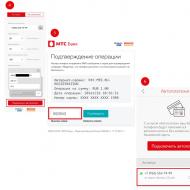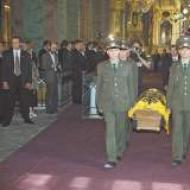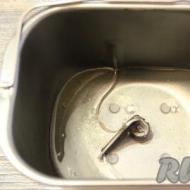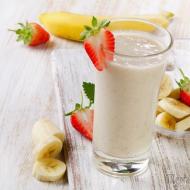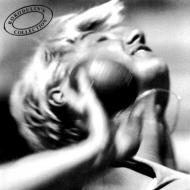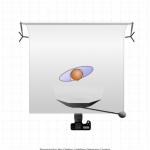
Subaru Legacy (third generation). Subaru Legacy III - model description Gearbox and cardan
For the first time the Subaru Legacy concept was released in 1987, the serial production of the model in Japan and the USA began only two years later. The car was offered with sedan and station wagon bodies. The cars were equipped with atmospheric and supercharged boxer "fours" with a capacity of 102–280 hp. With. The release of the first generation model ended in 1994.
2nd generation (BD/BG/BK), 1993–1998

In 1993, the second generation Subaru Legacy went on sale. The engines remained four-cylinder, but the weakest versions were gone. The strongest option was considered a car equipped with a 2.2 turbo engine with a capacity of 280 hp. With. The cars were completed with a five-speed “mechanics” or a four-band “automatic”. In 1994, a station wagon appeared (in the Japanese market it was called Lancaster) with a plastic off-road body kit and increased ground clearance. In 1996, Subaru Outback became an independent model. Production of the "second" Subaru Legacy was discontinued in 1998.
3rd generation (BE/BH), 1998–2004

The third generation Subaru Legacy was produced from 1998 to 2003 with sedan and station wagon bodies. The cars were equipped with four- or six-cylinder boxer petrol or diesel engines. During this time, such versions of the car as Blitzen, STI,.
4th generation (BL/BP), 2003–2009

Subaru Legacy went on sale in 2003 fourth generation, which is a third-generation model with a wheelbase increased by 20 mm. Cars were offered in versions with a four- or six-cylinder boxer petrol or diesel engine. Legacy was delivered to the Russian market with gasoline engines 2.0 (150 hp), 2.5 (173 hp) and 3.0 with 245 hp. With. In 2009 there was a change of generations.
In the late nineties, the Japanese auto industry had not yet realized the need to lure the buyer with a bright exterior. The renaissance came later, around the time of the seventh Honda Accord and the first Mazda 6. So Legacy number three is a typical child of one of the most conservative design companies. Unfortunately, Subaru did not dare to develop the idea of the wedge-shaped work of Giorgetto Giugiaro. But there were no pop-eyed second-generation Impreza. The most striking design feature is the connecting rear lights trunk liner with Legacy lettering. As a result, we have a rather conservative outwardly sedan, clearly striving to please everyone at once, especially in the American market.

Inside
The interior, hidden behind frameless doors, as a logical continuation of the exterior, is uncomplicated in design. Two-tone trim - a classic trick that makes the interior visually more expensive, works this time too. Pattern door cards, upholstered in light leather to match the seats - with a claim to style. It is all the more offensive to see a not too unconvincing imitation of a tree on the center console. Especially in contrast to the real wood on the Momo steering wheel, which migrated here from the three-liter version.
1 / 3
2 / 3
3 / 3
The front seats cannot be called sports: the lateral support rollers are too widely spaced. But to the profile and length of the pillow - no complaints. Unfortunately, there are no electrical adjustments. There is enough space in the back for two people of average height, provided that the front passengers are similar in size.

 |
 |
The equipment, including leather trim, automatic, heated seats, climate control and cruise control is very convincing by the standards of the non-premium segment of the early 2000s. All controls are in place, but not without ergonomic miscalculations. For example, only the driver's power window has a backlight and an auto-closer, the pockets in the doors are too small, and the central armrest is also not a record holder in terms of volume. In Subaru, you say, this is not the main thing?
1 / 4
2 / 4
3 / 4
4 / 4
In move
Unlike the Impreza, the Legacy is not bound by a strict dress code that requires you to have a turbo engine and mechanics. If you look at Subaru as typical sedan middle class, then the atmospheric boxer “four” with a volume of 2.5 liters is even more relevant here. The power is confusing - only 156 hp, and besides, in combination with a four-speed automatic. Won't that kill the sportiness that is said to live in every Subaru?

The slightest touch on the gas pedal Legacy regards as a command "Face!". The jerk from the place is sharp and looks promising, but the miracle does not happen. The dynamics cannot be called completely vegetable, the sedan confidently keeps in the stream, but the Legacy 2.5 is undoubtedly far from the sport. And the main share of the blame here still definitely lies with the machine. The box, slowly shuffling its four gears, is clearly sharpened for comfort and does not hesitate to steal the lion's share of the torque. Sports mode saves only partly.

It's a pity, because 223 Nm are worthy of more reasonable use. Especially considering how obediently the sedan obeys the commands of the four-spoke steering wheel. Turns Legacy prescribes easily and naturally, as if sticking to the road: a low center of gravity (partly thanks to the boxer motor) does its job. With increasing speed, the situation does not change. Rolls and buildups are still minimal - Legacy with all its appearance clearly demonstrates that the ultimate capabilities have not yet been reached.
Consumption per 100 km
The suspension (McPherson struts at the front and multi-link at the rear) tries to find a balance between comfort as an integral part of a solid sedan and sport, which is dictated by the brand's ideology. Whether it works or not depends on the situation. Outside the city, an overly detailed reading of the numerous folds of asphalt periodically generates a small yaw. But in the city, the energy intensity of the suspension allows you to storm without slowing down, even weaving tram tracks at the crossroads.

All third-generation Legacy have all-wheel drive, but, as they say, there is a nuance. The fate of this sedan was determined by the presence of a machine gun and not the most powerful engine. For the redistribution of torque here, it is not the center differential that is responsible, but the hydromechanical clutch. In the event of slippage of the front wheels, it is able to transfer up to 50% of traction to the rear. "Honest" symmetrical four-wheel drive with a center differential was the lot of powerful versions. But even such a Subaru can give confidence on a slippery road. Let not the brightest, but still a star from the constellation Pleiades.
Purchase history
Boris' romance with Subaru began in 2010. The first was the first generation Impreza, which really won him over with a combination of reliability and reckless handling, available all year round. appeared after her Ford Focus Boris still remembers with a shudder. Naturally, when it came to buying a new everyday car in 2014, there was no question of choosing a brand - only Subaru. Since a little more comfort was required compared to the Impreza, but not at the expense of handling, the search for the Legacy began.
 |
 |
A suitable copy was found only after a month and a half. A 2001 European specification sedan imported from Germany in 2007 was sold with 190,000 km. First of all, Boris was attracted by a lively body - almost entirely in his native paint - and good equipment. The price was slightly higher than the market average at that time - 310,000 rubles.
Repair
Immediately after the purchase, all filters were replaced, new oils were poured into the engine and gearbox, air conditioning was filled. When changing the brakes, the choice fell on larger discs with a diameter of 294 mm (instead of 276 mm) with twin-piston calipers taken from the next generation Legacy. Boris replaced the candles on his own, simply by removing the battery and pushing the box aside air filter. It was not necessary to hang the engine for this.

After a small accident, the rear of the car had to be repaired. The left rear wing, the trunk lid, along with a decorative trim and rear optics, went under the replacement. Spare parts were bought in Vladivostok, which gave tangible savings compared to prices in St. Petersburg. At a recent MOT, another oil change was made in the automatic transmission. At the same time, ball joints and steering tips were replaced and the fluid in the power steering was updated.

Exploitation
The current mileage of the Legacy has already exceeded 300,000 km. The sedan perfectly copes with the role of a daily car and easily transfers long-distance voyages - for example, to Abkhazia. Boris still does not see an alternative to him, even among more modern Subaru models. He prefers to service the car himself.
Expenses
- Maintenance with engine oil change (Motul 5W-40) and filters - every 10,000 km
- Fuel consumption in the urban cycle - 12-13 l / 100 km
- Fuel consumption on the highway - 8-9 l / 100 km
- Fuel consumption in the combined cycle - 10-11 l / 100 km
- Fuel - AI-95
- Plans
Plans for an everyday car are purely domestic. This is the replacement of the windshield, the removal of the expired catalyst and the repair of the exhaust system. And most importantly - you have to deal with the oil burner. On a recent trip to Voronezh (almost 1,300 km), Legacy ate almost a liter of oil.

Model history
The premiere of the third generation Subaru Legacy was announced in 1998. The model was assembled in Japan and in the USA. For the first time in its history, a sedan was equipped with a non-alternative all-wheel drive, regardless of the market.
 Subaru Legacy" 1998–2003
Subaru Legacy" 1998–2003 The range of engines consisted of traditional boxer "fours" with a volume of 2.0 and 2.5 liters. The power of atmospheric versions started at 125 hp, but the turbocharged Legacy had 265 and even 280 hp. The limited edition versions with a three-liter six-cylinder “opposite” with a capacity of 223 hp stood apart. Civilian sedans were equipped with a five-speed manual or a four-band automatic, and for the STi version, a six-speed manual gearbox was ordered.
 Subaru Legacy" 1998–2004
Subaru Legacy" 1998–2004 Production of the third generation Legacy ended in 2004.
If we take the old Subaru, then ...
Lafayette, Indiana
Subaru Legacy B4,
Subaru Legacy Touring Wagon
Subaru Legacy- the third generation of the mid-size sedan or station wagon of the Japanese company Subaru.
Model B4 migrated from the second generation and was produced only in the sedan. The RSK was powered by the popular 2.0L DOHC twin-turbo engine producing 280 hp. With mechanical box gears and 260 hp on the machine (Tiptronic). As a result, acceleration from 0-100 km / h takes 5.7 seconds on a manual gearbox and 6.7 seconds on an automatic one. Models destined for export to Australia were tuned to use lower quality gasoline, and as a result had less power, 255 hp. for models with manual transmission and 236 hp with automatic transmission. As a result, acceleration from 0-100 took 6.3 seconds on the manual transmission and 7.1 seconds on the machine. B4 with manual transmission had a 50/50 torque distribution between the front and rear wheels, with automatic transmission - 35/65. The turbines work in tandem and this acceleration is due to the fact that the exhaust pressure has switched from one turbine to two, providing more power.
Also, compared to the standard Legacy, the brake system and control system have been finalized in the B4. With Bilstein front struts and rear shock absorbers, the B4 received a tough, but at the same time, very comfortable suspension. The brake system package included disc brakes and anti-lock braking system for all four wheels. In front, coupled with two-piston calipers, 16-inch ventilated discs were installed. Rear - 15-inch discs were equipped with single-piston calipers. The interior was trimmed in black leather with blue leather inserts. The driver's seat had an electronic adjustment system. B4 came with 17" alloy wheels BBS. That helped to reduce the weight of the car to 1495 kilograms with a full tank of fuel (64 liters). Low side fairings (so-called skirts) and a rear spoiler helped improve aerodynamics somewhat. In general, Legacy B4 does not have radical differences from its predecessor. The B4 RS model was equipped with a less powerful naturally aspirated 2-liter engine, but also had most distinctive features more powerful RSK model.
In 2001, the B4 RS25 model was released with a 2.5-liter naturally aspirated engine. In 2002, the B4 RS30 model was released with a naturally aspirated 3-liter EZ30 (flat-6) engine.
Modifications [edit | edit code]
GT-B [edit | edit code]
GT-B spec, this is an upgraded version of the Legacy Wagon, "B" is short for Bilstein, whose racks this version was equipped with. The E-Tune II version was introduced in 2001 as a 2002 model. Cars with Bilstein shocks had a small Bilstein badge on the back, below the "GT" badge. In the factory version, 2.0L 2-stage twin turbo engines were installed in the EJ208 (280 HP) configuration on a manual gearbox and, accordingly, EJ206 (260 HP) on an automatic transmission. The car was also equipped with a front screw lock.
Revision D [edit | edit code]
The fourth revision of the third generation Legacy brought some small but important changes to the front of the car. Wings, grille and headlights have undergone minor changes. For the Japanese market, the headlights received xenon lamps, as a result of which the headlights themselves became slightly smaller and the grille also changed dimensions. The new lamps also had a control on the instrument panel, which allowed the driver to adjust the direction of the light.
Blitz [edit | edit code]
Avignon [edit | edit code]
Named after a place in the south of France, this station wagon was shown in 2001 at the 35th Tokyo Motor Show. It had a dark blue body color and was equipped with a 2.5 liter naturally aspirated engine. The Avignon received unique body kit, wheels and interior pieces such as light brown seats and a dashboard.
STi S401 [edit | edit code]
In 2002, Subaru introduced a special edition B4 RSK car called the STi S401 with 400 cars produced for the Japanese market alone. The vehicle engine is equipped with a larger intake manifold with intercooler and air duct, as well as an active exhaust gas catalyst low pressure, due to which the engine power was increased to 293 hp. With. (torque 343 Nm). The transmission is equipped with a 6-speed manual gearbox. Brake system with Brembo calipers with steel-braided brake hoses. Rear suspension arms on ball joints. Standard equipment includes 18-inch BBS forged wheels, Pirelli "P-Zero-Nero" tires, upper front shock struts, and 10mm lower springs. Outwardly, it differs in a different front bumper, radiator grille, door sills and an overlay on the air intake on top of the hood. In the cabin, there are leather and Alcantara seats, a speedometer with markings up to 240 km / h, aluminum pedals, as well as a special set of tools manufactured by Snap-on. There are three body colors: exclusive blue and gray opal, as well as existing in the base model "black topaz".
STi S402 [edit | edit code]
For the 2003 model year, Subaru sold limited edition Legacy, developed by its division Subaru Tecnica International. And again, only 400 copies of the sedan were produced. ,

All-wheel drive is in high demand today. Of course, there were no crossovers here. But it was not they who began to propagate the idea of \u200b\u200ball-wheel drive. Here is one of the proofs: a middle-class sedan that saves buyers from the torment of choosing a drive type - the Subaru Legacy BE.
Outside
In the late nineties, the Japanese auto industry had not yet realized the need to lure the buyer with a bright exterior. The renaissance came later, around the time of the seventh Honda Accord and the first Mazda 6. So Legacy number three is a typical child of one of the most conservative design companies. Unfortunately, Subaru did not dare to develop the idea of \u200b\u200bwedge-shaped Coupe SVX by Giorgetto Giugiaro. But there were no pop-eyed second-generation Impreza. The most striking design feature is the trim on the trunk that connects the rear lights with the Legacy inscription. As a result, we have a rather conservative outwardly sedan, clearly striving to please everyone at once, especially in the American market.




Inside
The interior, hidden behind frameless doors, as a logical continuation of the exterior, is uncomplicated in design. Two-tone trim - a classic trick that makes the interior visually more expensive, works this time too. Pattern door cards, upholstered in light leather to match the seats - with a claim to style. It is all the more offensive to see a not too unconvincing imitation of a tree on the center console. Especially in contrast to the real wood on the Momo steering wheel, which migrated here from the three-liter version.
The front seats cannot be called sports: the lateral support rollers are too widely spaced. But to the profile and length of the pillow - no complaints. Unfortunately, there are no electrical adjustments. There is enough space in the back for two people of average height, provided that the front passengers are similar in size.



The equipment, including leather trim, automatic, heated seats, climate control and cruise control is very convincing by the standards of the non-premium segment of the early 2000s. All controls are in place, but not without ergonomic miscalculations. For example, only the driver's power window has a backlight and an auto-closer, the pockets in the doors are too small, and the central armrest is also not a record holder in terms of volume. In Subaru, you say, this is not the main thing?
In move
Unlike the Impreza, the Legacy is not bound by a strict dress code that requires you to have a turbo engine and mechanics. If you look at Subaru as a typical middle-class sedan, then the atmospheric boxer "four" with a volume of 2.5 liters is even more relevant here. The power is confusing - only 156 hp, and besides, in combination with a four-speed automatic. Won't that kill the sportiness that is said to live in every Subaru?

The slightest touch on the gas pedal Legacy regards as a command "Face!". The jerk from the place is sharp and looks promising, but the miracle does not happen. The dynamics cannot be called completely vegetable, the sedan confidently keeps in the stream, but the Legacy 2.5 is undoubtedly far from the sport. And the main share of the blame here still definitely lies with the machine. The box, slowly shuffling its four gears, is clearly sharpened for comfort and does not hesitate to steal the lion's share of the torque. Sports mode saves only partly.

It's a pity, because 223 Nm are worthy of more reasonable use. Especially considering how obediently the sedan obeys the commands of the four-spoke steering wheel. Turns Legacy prescribes easily and naturally, as if sticking to the road: a low center of gravity (partly thanks to the boxer motor) does its job. With increasing speed, the situation does not change. Rolls and buildups are still minimal - Legacy with all its appearance clearly demonstrates that the ultimate capabilities have not yet been reached.
The suspension (McPherson struts at the front and multi-link at the rear) tries to find a balance between comfort as an integral part of a solid sedan and sport, which is dictated by the brand's ideology. Whether it works or not depends on the situation. Outside the city, an overly detailed reading of the numerous folds of asphalt periodically generates a small yaw. But in the city, the energy intensity of the suspension allows you to storm, without slowing down, even the interweaving of tram tracks at intersections.

All third-generation Legacy have all-wheel drive, but, as they say, there is a nuance. The fate of this sedan was determined by the presence of a machine gun and not the most powerful engine. For the redistribution of torque here, it is not the center differential that is responsible, but the hydromechanical clutch. In the event of slippage of the front wheels, it is able to transfer up to 50% of traction to the rear. "Honest" symmetrical all-wheel drive with a center differential was the lot of powerful versions. But even such a Subaru can give confidence on a slippery road. Let not the brightest, but still a star from the constellation Pleiades.
Purchase history
Boris' romance with Subaru began in 2010. The first was the first generation Impreza, which really won him over with a combination of reliability and reckless handling, available all year round. Boris, who appeared after her Ford Focus, still remembers with a shudder. Naturally, when it came to buying a new everyday car in 2014, there was no question of choosing a brand - only Subaru. Since a little more comfort was required compared to the Impreza, but not at the expense of handling, the search for the Legacy began.


A suitable copy was found only after a month and a half. A 2001 European specification sedan imported from Germany in 2007 was sold with 190,000 km. First of all, Boris was attracted by a lively body - almost entirely in his native paint - and good equipment. The price was slightly higher than the market average at that time - 310,000 rubles.
Repair
Immediately after the purchase, all filters were replaced, new oils were poured into the engine and gearbox, air conditioning was filled. When changing the brakes, the choice fell on larger discs with a diameter of 294 mm (instead of 276 mm) with twin-piston calipers taken from the next generation Legacy. Boris replaced the candles on his own, simply by removing the battery and pushing the air filter box aside. It was not necessary to hang the engine for this.

After a small accident, the rear of the car had to be repaired. The left rear wing, the trunk lid, along with a decorative trim and rear optics, went under the replacement. Spare parts were bought in Vladivostok, which gave tangible savings compared to prices in St. Petersburg. At a recent MOT, another oil change was made in the automatic transmission. At the same time, ball joints and steering tips were replaced and the fluid in the power steering was updated.

Exploitation
The current mileage of the Legacy has already exceeded 300,000 km. The sedan perfectly copes with the role of a daily car and easily transfers long-distance voyages - for example, to Abkhazia. Boris still does not see an alternative to him, even among more modern Subaru models. He prefers to service the car himself.
Expenses
- Maintenance with engine oil change (Motul 5W-40) and filters - every 10,000 km
- Fuel consumption in the urban cycle - 12-13 l / 100 km
- Fuel consumption on the highway - 8-9 l / 100 km
- Fuel consumption in the combined cycle - 10-11 l / 100 km
- Fuel - AI-95
- Plans
Plans for an everyday car are purely domestic. This is the replacement of the windshield, the removal of the expired catalyst and the repair of the exhaust system. And most importantly - you have to deal with the oil burner. On a recent trip to Voronezh (almost 1,300 km), Legacy ate almost a liter of oil.

Model history
The premiere of the third generation Subaru Legacy was announced in 1998. The model was assembled in Japan and in the USA. For the first time in its history, a sedan was equipped with a non-alternative all-wheel drive, regardless of the market.

Subaru Legacy ‘1998–2003
The range of engines consisted of traditional boxer "fours" with a volume of 2.0 and 2.5 liters. The power of atmospheric versions started at 125 hp, but the turbocharged Legacy had 265 and even 280 hp. The limited edition versions with a three-liter six-cylinder “opposite” with a capacity of 223 hp stood apart. Civilian sedans were equipped with a five-speed manual or a four-band automatic, and for the STi version, a six-speed manual gearbox was ordered.

Subaru Legacy ‘1998–2004
Production of the third generation Legacy ended in 2004.
Subaru began sales of the third generation Legacy in Japan and worldwide in June 1998, while North America sales of the model began only in 2000. Models sold in the US were fitted with symmetrical all-wheel drive as standard. The Legacy was the only car in its class to have AWD as standard equipment in most of the world's markets. Models sold in the global and Japanese markets were equipped with engines ranging from the naturally aspirated 2.0 liter horizontal boxer to the EZ30 on the 3.0R. The four-cylinder engine continues to use a camshaft timing belt that needs to be replaced every 100,000 kilometers, while the six-cylinder 3-liter engine was equipped with a timing chain that did not need to be replaced during normal use. In 2001 a new 3 liter 6 cylinder EZ30 engine was developed for the Outback.
Worldwide production of station wagons with flat roofs was discontinued, and instead a relief roof was used, which was installed on the station wagons Legacy Wagon and Legacy Outback.
The 4-speed automatic transmission had an onboard first gear override feature. This helped to drive the car in difficult road conditions, such as snow or ice. The system was activated by shifting the gear lever from the "D" position to the "2nd" position. In this case, the car will move from the second gear, and not from the first. The transmission will also change the distribution of torque between the front and rear wheels in a 50/50 ratio.
The automatic transmission also had the ability to vary shift points, and not change gear for longer when the engine was running at high speeds. This was achieved by hard depressing the accelerator pedal, causing the transmission to spin the engine up to 5,000 rpm before shifting into the next gear. Unlike previous generations, no indication appears on the instrument panel. The transmission also had over-rev protection, by shifting to the next available gear if the engine revs reached 6500 rpm, even if the selector was in the downshift position.
Specialized for the Japanese market cars with a twin turbo engine had a semi-automatic transmission, which allowed the driver to move the gear lever to the left, and then change gears as on a manual transmission.
Model B4 migrated from the second generation and was produced only in the sedan. The RSK was powered by the popular 2.0L DOHC twin-turbo engine producing 280 hp. with a manual transmission and 260 hp. on the machine (Tiptronic). As a result, acceleration from 0-100 km / h takes 5.7 seconds on a manual gearbox and 6.7 seconds on an automatic one. Models destined for export to Australia were tuned to use lower quality gasoline, and as a result had less power, 255 hp. for models with manual transmission and 236 hp with automatic transmission. As a result, acceleration from 0-100 took 6.3 seconds on the manual transmission and 7.1 seconds on the machine. The manual B4 had a 50/50 front/rear torque distribution, the automatic 35/65, and as a technically luxurious sedan, the new Legacy B4 was designed for both quiet and sporty driving. But first you have to understand how impressive the twin-turbo system makes the car. At low revs, the car only uses one of the two available turbos. You will get real pleasure when both turbines work. So, when the RPM is below 4000, the B4 only uses the main turbo. But it is worth pressing the accelerator pedal, bringing the speed to 4500, and the car will come to life. And it really comes alive. Getting rid of the turbo lag made the B4 exciting and intriguing at the same time. She's really fast. 0-100 km/h in just 6.5 seconds. But the feeling is very different from other cars. You let go of the clutch, step on the gas, and the car rushes forward. However, after a second of excellent acceleration, the car, it would seem, loses its agility. Then, just when you think you're not going to be pushed harder into your leather seat, there's even more acceleration as the tachometer needle darts from 4500 to 7000. Now the turbines work in tandem, and this acceleration is due to the fact that the exhaust pressure has switched from one turbine to two, providing more power. The B4 has a relatively small 2 liter engine block. However, this does not prevent her from developing power comparable to 3-4-liter sports cars. With a horizontally opposed, also called 'boxer', 2-liter engine equipped with two turbines, two camshafts, a system exhaust valve sodium-cooled (for better heat dissipation), the B4 put out a whopping 260 hp. at 6,400 rpm (for vehicles in Australia). What is 10 hp more than the WRX. The torque of 320 Nm at 4,800 rpm is more than enough to move quickly. In the Japanese market, the B4 had as much as 280 hp. This was possible because Japan has 100 octane gasoline. Since we and most markets in the world only have 98 octane gasoline, the engines for these markets have been derated to match the quality of the gasoline. Also, compared to the standard Legacy, the brake system and control system have been finalized in the B4. With Bilstein front struts and rear shock absorbers, the B4 received a stiff yet comfortable suspension. The brake system package included disc brakes and anti-lock braking system for all four wheels. In front, coupled with two-piston calipers, 16-inch ventilated discs were installed. Rear - 15-inch discs were equipped with single-piston calipers. As a result, the braking system was very predictable and powerful enough. Inside the new Subaru, you got a great Momo leather steering wheel and a 7-speaker McIntosh audio system with a 60-watt subwoofer. The interior was trimmed in black leather with blue leather inserts. The driver's seat had an electronic adjustment system. From the outside, the Legacy B4 doesn't look too sporty, but the hood scoop more than betrays its turbocharged nature. The B4 came with 17" BBS alloy wheels. That helped to reduce the weight of the car to 1495 kilograms with a full tank of fuel (64 liters). Low side fairings (so-called skirts) and a rear spoiler helped improve aerodynamics somewhat. All in all, the Legacy B4 doesn't drastically change from its predecessor, however, these small changes definitely improve the overall picture. The B4 RS model was equipped with a less powerful naturally aspirated 2-litre engine, but also shared most of the distinguishing features of the more powerful RSK model.
In 2001, the B4 RS25 model was released with a 2.5-liter naturally aspirated engine. In 2002, the B4 RS30 model was released with a naturally aspirated 3-liter EZ30 (flat-6) engine.
GT-B spec, this is an improved version of the Legacy Wagon, "B" is short for Bilstein, whose racks this version was equipped with. The E-Tune II version was introduced in 2001 as a 2002 model. Cars with Bilstein shocks had a small Bilstein badge on the back, below the "GT" badge. In the factory version, 2.0L 2-stage twin turbo engines were installed in the EJ205 (280 HP) configuration on a manual gearbox and, accordingly, EJ206 (260 HP) on an automatic transmission.
Revision D
The fourth revision of the third generation Legacy brought some small but important changes to the front of the car. Wings, grille and headlights have undergone minor changes. For the Japanese market, the headlights received xenon lamps, as a result of which the headlights themselves became slightly smaller and the grille also changed dimensions. The new lamps also had a control on the instrument panel, which allowed the driver to adjust the direction of the light.
blitzen
The Blitzen was the result of a collaboration with Porsche, resulting in many unique parts and a color scheme. Wheels, body kits, interior were designed by Porsche engineers. The machine was also equipped automatic transmission Tiptronic from Porsche, first used in Subaru models.
A station wagon version became available in 2001 with the EZ30 engine.
In 2002, the model was updated with a modified body design.
Avignon
Named after a place in the south of France, this station wagon was shown in 2001 at the 35th Tokyo Motor Show. It had a dark blue body color and was equipped with a 2.5 liter naturally aspirated engine. The Avignon received unique body kit, wheels and interior pieces such as light brown seats and a dashboard.
STi S401
in 2000, Subaru introduced a special edition B4 RSK car called the STi S401 with 400 cars produced for the Japanese market alone. The car's engine is equipped with a larger intake manifold with intercooler and air duct, as well as an active low pressure exhaust gas catalyst, due to which the engine power has been increased to 293 hp. With. (torque 343 Nm). The transmission is equipped with a 6-speed manual gearbox. Brake system with Brembo calipers with steel-braided brake hoses. Standard equipment includes 18-inch BBS forged wheels, Pirelli "P-Zero-Nero" tires, and 10mm lower springs. Outwardly, it differs in a different front bumper and radiator grill, in the cabin there are seats trimmed with leather and Alcantara, a speedometer with markings up to 240 km / h, aluminum pedals, as well as a special set of tools manufactured by Snap-on. There are three body colors: exclusive blue and gray opal, as well as existing in the base model "black topaz".
STi S402
For the 2003 model year, Subaru sold a limited edition Legacy developed by its Subaru Tecnica International division. And again, only 400 copies of the sedan were produced. ,
Links
- http://www.subaru-sti.co.jp/s401/index.html Japanese version of S401 review
- http://homepages.ihug.co.nz/
ccgrant/s401.htm English version of S401 review
Sales market: Japan. Right hand drive
Legacy Touring Wagon is a station wagon belonging to the middle class of cars. With the advent of the third generation Legacy, the station wagon version was released six months earlier than the sedan, which received its own B4 brand and, thanks to the best modifications, was firmly entrenched in the sports class. In turn, the Legacy Wagon continued the direction of first-class station wagons, not forgetting, of course, about the sporty driving characteristics that made almost the whole world pay attention to themselves. For three generations of the Legacy model, Subaru has retained the concept of this machine. The result is a car with its own character. Worthy of note is the fact that with the general Japanese trend towards an increase in external dimensions, the Legacy Wagon retained the same dimensions of the body. The third generation of this model was produced exclusively in an all-wheel drive version and was equipped with engines with a volume of 2 liters and above.
Ditching the 1.8-litre trim levels, the new generation Legacy Wagon prioritizes power, performance, safety and driving pleasure, demonstrating the best of all-wheel drive station wagons. Of course, inexpensive modifications offered only the most necessary minimum (air conditioning, power steering, power accessories, fog lights, “casting”), but everything changed with an increase in the level of equipment - the car received climate control, an electric sunroof, roof rails, a leather-wrapped steering wheel, woodgrain trim, a leather interior, electric front seats, a CD player. One of the best trim levels generations - 3.0 Blitzen 6, the result of a collaboration with Porsche Design, which developed unique details (wheels, body kit, interior) and body colors. And the GT-B version deserves attention as an extended sporty variant with Bilstein struts, large brake discs and an aero kit that reduces wind noise and improves aerodynamic performance.
When creating the third generation Legacy Wagon, new, improved engines and chassis are used. The most powerful motors are 260 and 280 hp. installed on GT modifications, which are very popular. A little later, modifications were added, equipped with 2.5- and 3-liter naturally aspirated engines with a capacity of 170 and 220 hp, while the 3-liter configuration uses the well-proven boxer engine with a horizontal arrangement of six cylinders. The unpretentious two-liter aspirated - SOHC with a capacity of 137 hp also deserve attention. and DOHC with 155 hp. with a variable valve timing system. Almost all Legacy Wagon modifications offer manual and automatic transmission options, with the exception of the 250T versions, which use only the “automatic”.
To ensure the best driving performance Legacy Touring Wagon rear suspension became multi-link, it provides sufficient strokes, the necessary rigidity and at the same time compact dimensions, which is important for providing the necessary amount of cargo space. The front suspension is the usual suspension struts. The GT-B and 250T-B versions, as already noted, use Bilstein sports struts, which provide a high degree of balance and increased handling. In addition, the sports suspension is lightened with forged aluminum wishbones to reduce unsprung weight. And, of course, do not forget about modifications with air suspension (250T), which allows you to adjust the amount of ground clearance.
The standard for all trim levels is the presence of front airbags, ABS systems, front belts with pretensioners and load limiters, as well as optional side airbags. In more expensive trim levels, there are child seat mounts, xenon headlights, a VDC system, vehicle dynamics control, which, in combination with AWD and ABS systems, made it possible to further increase safety. The body structure has better rigidity and is surrounded by a large cross-section annular frame to reduce cabin deformation in a collision. To improve visibility during rain, a newly designed windscreen wiper with improved performance has been installed.
Among the right-hand drive station wagons offered on the market, Legacy is dominated by 2-liter modifications, mainly with atmospheric engines, but those who are focused on “turbo” have a choice. In general, the Legacy Touring Wagon is an excellent example of a family station wagon, characterized by high comfort and spaciousness, and even with all-wheel drive. Basic versions with low power engines show good economy due to their horizontally opposed motors. Powerful versions - excellent dynamics thanks to the same horizontally opposed engines that have become an integral feature of Subaru cars.
Read completelyDespite the fact that the Subaru Legacy sedan was never sold in Russia in gigantic print runs, the car was respected in our country. main reason low sales runs was the high cost of the car, and it, in turn, was due to the high technical level and reliability.
True, 4 years ago, after the cessation of production of the 5th generation, the car left our market. But with the launch of the 6th generation restyled Subaru Legacy, the prestigious Japanese car returned to Russia. And it's time to get to know him in more detail.
Model history
Compared to many Japanese car models, the Legacy model is relatively young. Its first generation appeared in 1989 year. The car was outwardly nondescript, but at the same time it had advanced technical stuffing. The machine has been installed boxer engines, volume from 1.8 to 2.2 liters. At the same time, the most powerful EJ22 engine developed a power of 280 hp. With. In addition, four-channel ABS, adaptive suspension and other "chips" of prestigious models were installed on the car.
Subaru Legacy first generation
But the main feature of the model was an all-wheel drive transmission, which at that time was installed exclusively on SUVs. This option has led to increased controllability of the machine.
However, due to the failure appearance, the first generation of the Subaru Legacy was practically unknown in our country. At that time, none of the companies officially sold cars in our country, and gray dealers ignored the car because of the high price. Although single cars can be found, even now.
Second generation models appeared in 1993. Naturally, the right-hand drive version appeared first, but the left-hand drive version appeared 2 years later - in 1995. This model, perhaps, is known to all motorists, because the car was sold with us officially and in quite decent quantities.
 Subaru Legacy second generation
Subaru Legacy second generation The car retained the philosophy of the previous generation, but at the same time its appearance was much more pleasant. This and official sales determined the success of the car in our country. The exact number of cars sold could not be found. But even visually, on the roads, they met more than often.
One of the "chips" of the second generation was the all-wheel drive suspension, which was installed exclusively on all variants of the model. True, front-wheel drive Legacy was sold in the Japanese islands and in small quantities came to us in the Far East.
third generation was released in 1998 in Japan. The car entered the world market only after 2 years, in 2000. Modernization was quite traditional. Appearance has not changed radically. The 1.8-liter engine was removed from the model, but a new three-liter was added power unit. There were a number of other changes, but we will not describe them. The main thing to say is that the model did not repeat the success of the second generation, and these cars were sold much less.
The model stood on the assembly line for a relatively short time, and in 2003 it was replaced by the next generation.
 Subaru Legacy third generation
Subaru Legacy third generation fourth generation Legacy has been on sale since 2003. The car has radically changed its image. On the technical side, there were also serious changes. Powerful turbocharged engines began to be installed on the car. In addition to power units, almost all vehicle systems have undergone modernization.
As for Russia, despite the fact that the car was officially sold with us, it did not receive much popularity.
 Subaru Legacy fourth generation
Subaru Legacy fourth generation Fifth generation release started in 2009. Compared with other generations, this generation in Russia is as little known as, for example, the first generation. Cars, although officially sold in our country, are rarely seen on the roads. In total, about 150 copies were sold annually. This was due, first of all, to the high price of cars, and not because of any technical problems.
 Fifth generation Subaru Legacy
Fifth generation Subaru Legacy Given this situation, sixth generation which appeared in 2014 year, it was decided not to sell in Russia. However, in the Far East, directly, the car is imported and sold in quite decent quantities. It seems no less than 150 cars, which were previously sold officially.
After assessing the situation, the Japanese realized that they made a mistake, and the car still has good potential and needs to be returned to the market. Moreover, the Subaru Outback, based on Legacy, has been and is still being sold.
In 2017, the sixth generation underwent a planned restyling, and then it was decided to return it to Russian market. And we will consider it in more detail.
 Sixth generation Subaru Legacy
Sixth generation Subaru Legacy Appearance
Despite the fact that this is just a restyling, the appearance of the Japanese sedan has changed significantly. The radiator grille has changed shape and increased in size, which gave the car solidity. The headlights have become a wonderfully complex shape, but at the same time they fit very well into the exterior. By the way, they are LED on the Japanese sedan.
The front bumper seems to be without any special frills, although the large fake ventilation ducts on its sides are also aimed at creating the image of a solid car. And this is not surprising, because such a powerful market player as Toyota Camry appears in the competitors of the sedan.
 Front view of the sixth generation restyled Legacy
Front view of the sixth generation restyled Legacy Since the second generation, the Subaru Legacy has been famous for its harmonious side view. And the sixth generation is no exception. Clear compasses carved wheel arches, moderately protruding trunk, everything is harmonious and fine.
 Side view of the sixth generation Subaru Legacy after restyling
Side view of the sixth generation Subaru Legacy after restyling Compared to the pre-styling model, you can see that, for the sake of modern automotive fashion, the sidewall lines have become more chopped and clear.
 Side view of the Legacy before restyling
Side view of the Legacy before restyling The rear view of the updated sedan has changed little. The taillights have been slightly reduced. And most importantly, now they are fully LED.
 Rear view of Subaru Legacy 6 generation
Rear view of Subaru Legacy 6 generation As for the rear bumper, it is now more modern with an integrated exhaust system.
 Rear dimensions of the new Subaru Legacy
Rear dimensions of the new Subaru Legacy Summarizing the impressions of the appearance, it must be said that, despite all the updates, it remained old-fashioned and, it seems, the youth will not really like the appearance of the new Legacy.
In conclusion, about the overall dimensions.
dimensions
By tradition, the dimensions of the updated car have become larger than before. True, quite a bit. For example, the length has increased by only 5 mm, the width has increased more, by 60 mm, the height is the same by 5 mm. In this way, the dimensions of the new Subaru Legacy are as follows:
- Length - 4800 mm;
- Width - 1840 mm;
- Height - 1500 mm;
- Ground clearance Subaru Legacy 2018 - 150 mm;
- Wheelbase - 2750 mm.
Interior and interior equipment
The Japanese engineers decided not to radically change the front panel. But some changes that made it more modern were still made. First of all, the restyled Subaru has got a new steering wheel. The scales of the speedometer and tachometer have acquired deep stylish tunnels. And between them is a small 5-inch display, which displays information about the operation of engine systems.
 The front panel of the new Subaru Legacy
The front panel of the new Subaru Legacy A large 8-inch monitor is located on the center console of the car multimedia system. Below it are clear and understandable scales for controlling the climate system. The sporty style of the sedan is emphasized by new sports pedals.
 8’ LCD display of the new Subaru Legacy
8’ LCD display of the new Subaru Legacy As for the materials from which the interior of the Japanese novelty is made, they are of the highest quality. And most importantly, in all configurations, the interior of the new Legacy is leather, which is not surprising, given who the Japanese sedan is going to compete with.
The trunk of the sedan is very spacious, its volume is 506 liters. If you fold the rear seatbacks, the cargo volume will be much larger.
 luggage compartment new Legacy
luggage compartment new Legacy Equipping the Japanese sedan with various electronic systems, in all trim levels, is very rich. The new Legacy has:
- Start/Stop button;
- Front seats with electric adjustment and position memory system;
- Steering wheel heating system;
- Heated front seats;
- Keyless access system in the car;
- Heated windshield washer nozzles;
- EBD brake force distribution system;
- Auxiliary braking system BAS;
- Lane control system LKA;
- Intelligent cruise control with ACCS radar;
- ESP stability control system;
- Anti-slip system TCS;
- Hill assist system HAC;
- AFS road lighting system in corners;
- Automatic high beam switching;
- Control system of "dead zones";
- The system for monitoring the physical condition of the driver;
- Frontal collision avoidance system;
- 2-zone climate control;
- Surround cameras;
- Automatic wipers with rain sensors.
Security systems need to be discussed separately.
Security systems
Except electronic systems responsible for the safety described above, there are still 8 airbags on the car:
- Driver's;
- Passenger;
- 2 side airbags;
- 2 knee airbags;
- 2 side pillows-curtains on the windows.
Technical filling
There is only one power unit for the Japanese novelty, 4-cylinder boxer, 2.5 liters, brand FB25. This engine can be considered outstanding and it needs to be told in more detail.
Engine
This motor appeared as the deepest modernization of the no less legendary Subaru EJ253 power unit.
With the advent of aluminum cylinder blocks, it was noticed that the reliability of the motors suffers, since it is not possible to achieve the same resource as that of cast-iron heads. However, engines with aluminum heads had a much lower mass. Subaru engineers very elegantly solved this problem. They left the aluminum block, but at the same time it was lined with cast-iron sleeves, 3.5 mm thick. Thus, it was possible to achieve the reliability of cast-iron motors and the mass of aluminum. In addition, the engine received pistons with new friction-reducing skirts.
This engine has pretty decent power, despite the lack of turbocharging. It is 175 liters. With. The torque of this motor is 235 N * m at 4000 rpm.
 Subaru FB25 engine under the hood of the new Subaru Legacy
Subaru FB25 engine under the hood of the new Subaru Legacy Subaru Legacy fuel consumption with these powertrains is:
- In the city - 10.1 l / 100 km;
- On the highway - 6.2 l / 100 km;
- In the combined cycle - 7.7 l / 100 km.
Other specifications
This power unit is aggregated with only one gearbox– 8-speed CVT variator.
The power steering on the car is electric. The suspension of all wheels on the new Subaru Legacy is independent, MacPherson type in front, and double wishbones in the rear.
Wheels on a car with a diameter of 18 inches. And the car itself is designed to install rubber size 225/50 R18. Brakes on all wheels are disc, ventilated. The handbrake of the car is electric.
Complete set
For the Japanese novelty, only two trim levels are provided:
- YI Elegance;
- YN Premium ES.
Let's analyze them in more detail.
Equipment YI Elegance- Lane control systems;
- Intelligent cruise control with radar;
- Cornering lighting systems AFS;
- Automatic high beam switching systems;
- Blind spot monitoring systems;
- Driver monitoring systems;
- Frontal collision avoidance systems;
Of the video cameras on the car, only the rear view camera will be installed. There are no front cameras on the sides in this configuration. .
Cars in this configuration will cost from 2,089,000 rubles ($31,600).
Package YN Premium ESWell, this is the top-end equipment of the Subaru Legacy, in this configuration there are all the systems described above. In the top configuration Legacy in our country will be sold at a price of 2,239,900 rubles, which corresponds to 33,900 dollars.
Summary
Traditionally, Legacy is not a cheap car, although the price cannot be called exorbitant either. But what do you get for this price?
Legacy is usually compared with its main competitor, the Toyota Camry. So which is better?
First of all, dimensions, Toyota car is a bit more car Subaru. But at the same time, the trunk of the Legacy is more spacious.
Appearance . Here the question is subjective, but it seems that Toyota also wins here, the Subaru product looks, in comparison with it, old-fashioned.
What can take Subaru? First of all, despite all the reliability of Toyota, Legacy is considered even more reliable. In the USA, where the lion's share of Subaru sedans is sold, they say - "If you want to buy a car to last, buy a Subaru."
Of the other advantages, the Subaru Legacy all-wheel drive should be mentioned. Sedan engines, in addition to being more reliable, are also more economical. Well, there are also a lot more electronic systems on Subaru. True, while Toyota is cheaper.
And finally, all Legacy for Russia will be delivered directly from Japan, which once again should become a guarantee of the phenomenal reliability of the car.
Of course, if the question arises of what to buy a Subaru or Toyota, each consumer will decide on his own. But I think Subaru offers a more interesting car, though somewhat more expensive.
Video review Subaru Legacy 2018

